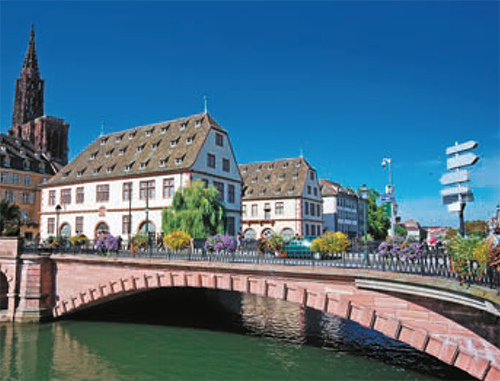SFC 2018
SFC 2018, the 12th annual instalment in this series, will take place on 17–19 October 2018, in Strasbourg, France, at the Palace of Music and Congress.
Photo Credit: Cosmin Sava/shutterstock.com

The field of supercritical fluid chromatography (SFC) and related technologies has evolved to include application areas unimaginable only a decade ago, according to the organizers, the nonprofit Green Chemistry Group. SFC encompasses the analysis of important polar and nonpolar mixtures in widely disparate application areas, including nutrition, pharmaceuticals, energy production, industrial chemicals, polymers, and flavours and fragrances. A leading international meeting for the discussion of exciting developments in this field is the Annual International Conference on Packed Column SFC and Related Technologies. SFC 2018, the 12th annual instalment in this series, will take place on 17–19 October 2018, in Strasbourg, France, at the Palace of Music and Congress.
Proceedings will begin with a short course on SFC and supercritical fluid extraction (SFE) on 17 October 2018, taught by Larry Taylor, Larry Miller, and David Pinkston. The course will cover basics of supercritical fluids, principles of SFC and SFE, method development, instrumentation and detection, as well as applications. The content is designed to benefit both beginners and experienced users of SFC and SFE methods. Two full days of lectures, posters, vendor exhibits, discussion sessions, and lively social gatherings will follow on 18–19 October 2018. Attendees will be able to talk with leading experts in one-on-one and small group settings, and are invited to share their research results through oral and poster presentations. Leading suppliers from all over the world will present the latest innovations in instrumentation, methods, and software.
A strong technical programme is at the core of the meeting and will feature world-renowned leaders in supercritical fluid technologies, including Davy Guillarme (University of Geneva, Switzerland), Eric Lesellier (University of Orleans, France), Charlotta Turner (Lund University, Sweden), Takeshi Bamba (Kyushu University, Japan), Hanna Leek (AstraZeneca, Sweden), Cyrille Santerre (Institut Superieur International du Parfum, France), Terry A. Berger (SFC Solutions, USA), Abhijit Tarafder (Waters Corporation, USA), and Caroline West (University of Orleans, France). Other leading researchers and thought leaders in SFC and SFE will be presenting lectures and attending the event.
For those delegates who wish to arrive early or extend their stay, Strasbourg has a distinctive old-world character with its soaring cathedral, charming burghers’ houses, and elegant Louis XV buildings. The quaint cobblestone streets and picturesque canals of the ancient quarters (on the Grande-Île) invite visitors to explore the city. In the 13th century, Strasbourg became the richest city in the Holy Roman Empire and a place where art and learning flourished. Today, Strasbourg is still a city of culture and boasts exceptional museums of fine arts, archaeology, and traditional Alsatian crafts.
The flagship event of the “SFC” conference series rotates between Europe and the United States every other year. The Green Chemistry Group has also added the SFC Asia conference to the lineup.
For further information, contact Nick Mitchell, President of the Green Chemistry Group, at NickM@phenomenex.com. For abstract submission, registration information, hotel and travel information, and more detail on the scientific programme, the social programme, and the vendor exhibition visit www.greenchemistrygroup.org/.

A Matrix-Matched Semiquantification Method for PFAS in AFFF-Contaminated Soil
Published: April 14th 2025 | Updated: April 14th 2025Catharina Capitain and Melanie Schüßler from the Faculty of Geosciences at the University of Tübingen, Tübingen, Germany describe a novel approach using matrix-matched semiquantification to investigate per- and polyfluoroalkyl substances (PFAS) in contaminated soil.
Silvia Radenkovic on Building Connections in the Scientific Community
April 11th 2025In the second part of our conversation with Silvia Radenkovic, she shares insights into her involvement in scientific organizations and offers advice for young scientists looking to engage more in scientific organizations.











